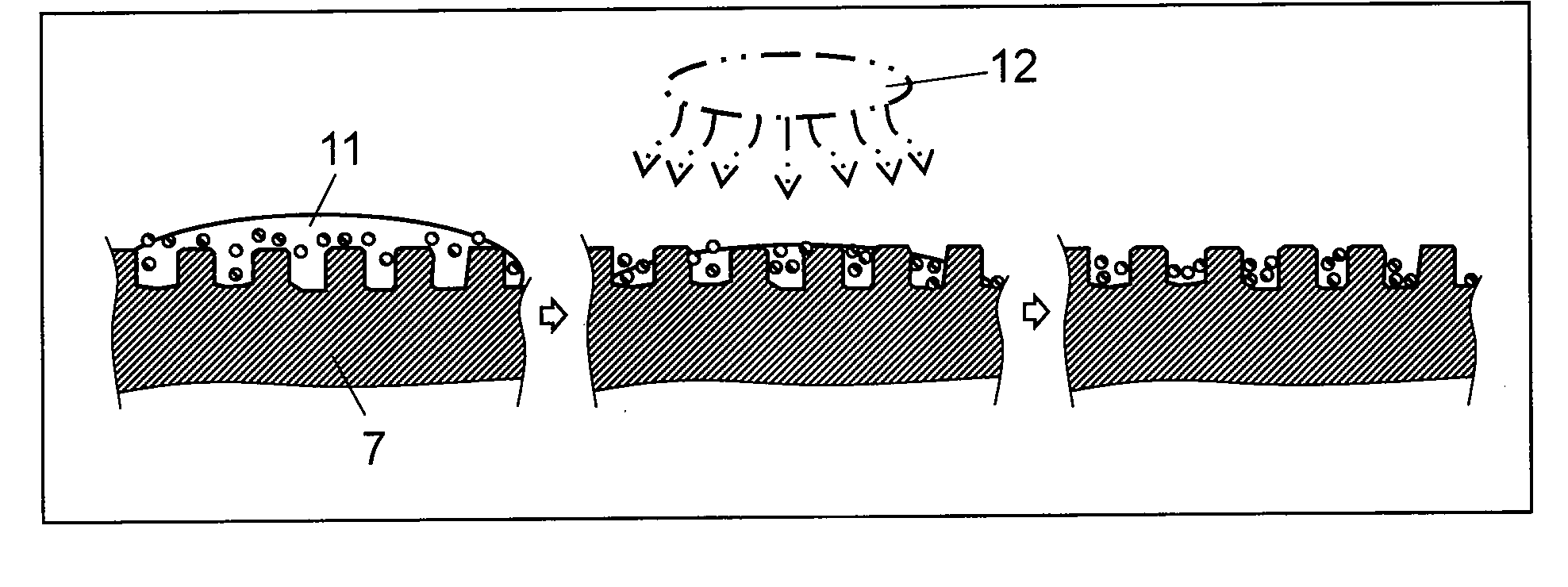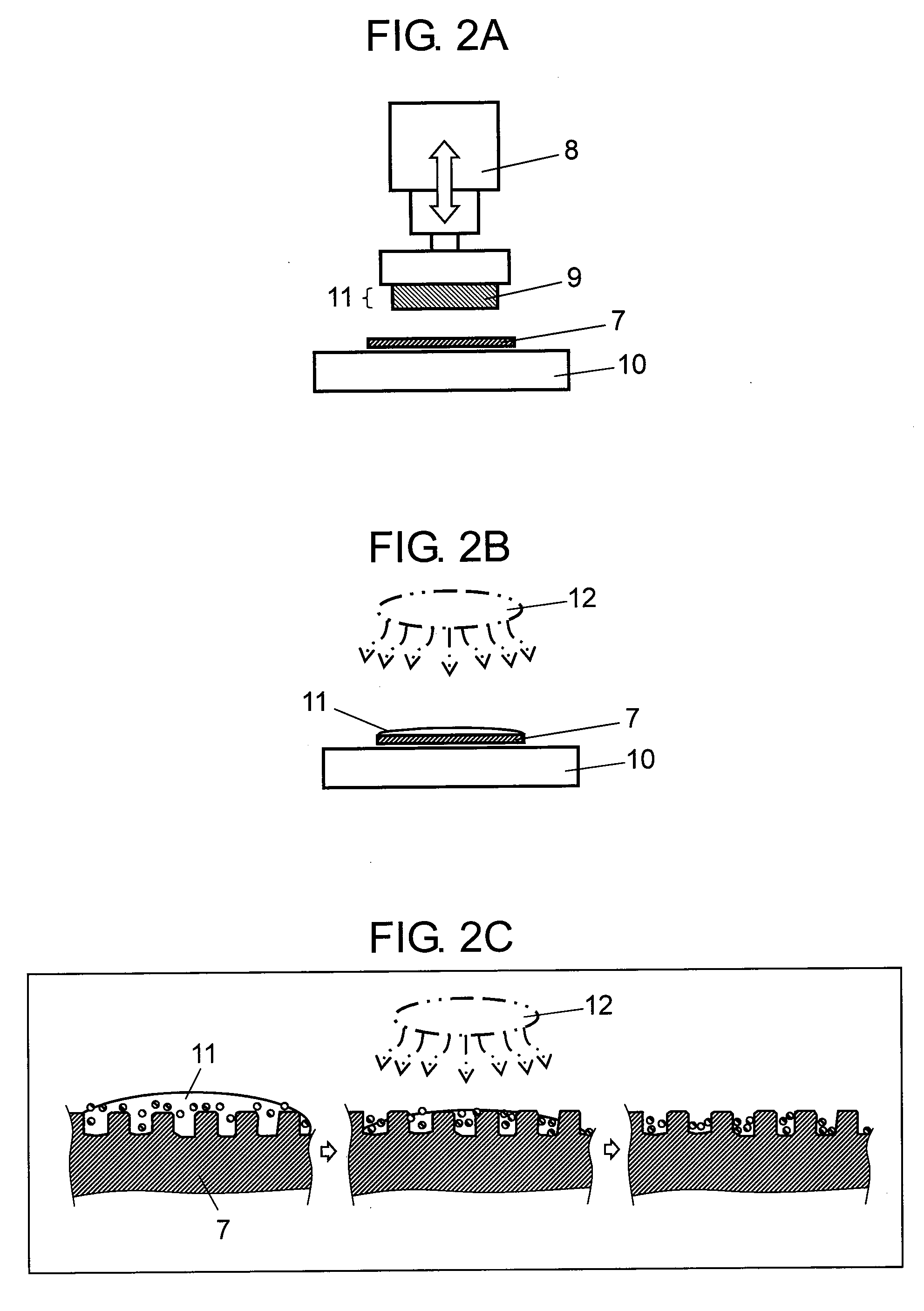Memory card
a memory card and portability technology, applied in the field of memory cards, can solve the problems of leaking out and affecting the use of the memory card for a long time, so as to prevent accidental ingestion over a long period of tim
- Summary
- Abstract
- Description
- Claims
- Application Information
AI Technical Summary
Benefits of technology
Problems solved by technology
Method used
Image
Examples
first exemplary embodiment
[0085]FIGS. 1A to 1G illustrate an appearance of a memory card in the first exemplary embodiment of the present invention. FIG. 1A is a front view, FIG. 1B is a rear view, FIG. 1C is a left side view, FIG. 1D is a right side view, FIG. 1E is a top side view, FIG. 1F is a bottom side view, and FIG. 1G is a sectional view taken along line 1G-1G in FIG. 1B.
[0086]Memory card 1 shown in FIGS. 1A to 1G is, for example, 20 mm wide, 21.5 mm long, and 1.4 mm thick. In general, this memory card is called a ‘mini SD memory card’ (mini secure digital memory card). This memory card 1 has a shape and size determined in accordance with the standard, and is commonly used in mobile devices such as mobile phone terminals.
[0087]In memory card 1, as shown in FIG. 1G, circuit board 4, on which mounting-components 17 including a semiconductor chip and chip component are placed, is built into casing 7. Multiple electrode terminals 5 for transmitting electrical signals to and from outside are also provided...
second exemplary embodiment
[0121]A memory card in the second exemplary embodiment of the present invention is described below with reference to FIGS. 7A to 7D. Memory card 201 in the second exemplary embodiment differs from memory card 1 in the first exemplary embodiment in that a bittering agent is retained in a bonding part of the casings. The other structures are the same.
[0122]FIG. 7A is a schematic view of memory card 201. The top drawing is a plan view, and the bottom drawing is a top side view. FIGS. 7B to 7D are partial magnified sectional views of the bonding part of the casings that has a specific structure for retaining the bittering agent. More specifically, as shown in FIG. 7B, a notch open to the outside is provided on the boundary face of at least one bonding part of casing 207, including upper casing 202 and lower casing 203. Accordingly, space 216 is formed when bonding upper casing 202 and lower casing 203. Bittering agent 211 is embedded and retained inside space 216 by applying bittering a...
third exemplary embodiment
[0126]A memory card in the third exemplary embodiment of the present invention is described below with reference to FIGS. 8A to 8D. Memory card 301 in the third exemplary embodiment differs from memory card 21 in the first exemplary embodiment in that a bittering agent is retained in a bonding part between the casing and the circuit board. Other structures are the same.
[0127]FIG. 8A is a schematic view of memory card 301. A top drawing is a plan view, and a bottom drawing is a top side view. FIGS. 8B to 8D are partial magnified sectional views of the bonding part of the casing and the circuit board that has a specific structure for retaining the bittering agent. More specifically, space 316 is formed between an end face of circuit board 304 and casing 307 when circuit board 304 and casing 307 are bonded, as shown in FIG. 8B. Bittering agent 311 is applied to an edge of the bonding part of casing 307 of memory card 301 so that bittering agent 311 is embedded and retained inside space...
PUM
 Login to View More
Login to View More Abstract
Description
Claims
Application Information
 Login to View More
Login to View More - R&D
- Intellectual Property
- Life Sciences
- Materials
- Tech Scout
- Unparalleled Data Quality
- Higher Quality Content
- 60% Fewer Hallucinations
Browse by: Latest US Patents, China's latest patents, Technical Efficacy Thesaurus, Application Domain, Technology Topic, Popular Technical Reports.
© 2025 PatSnap. All rights reserved.Legal|Privacy policy|Modern Slavery Act Transparency Statement|Sitemap|About US| Contact US: help@patsnap.com



